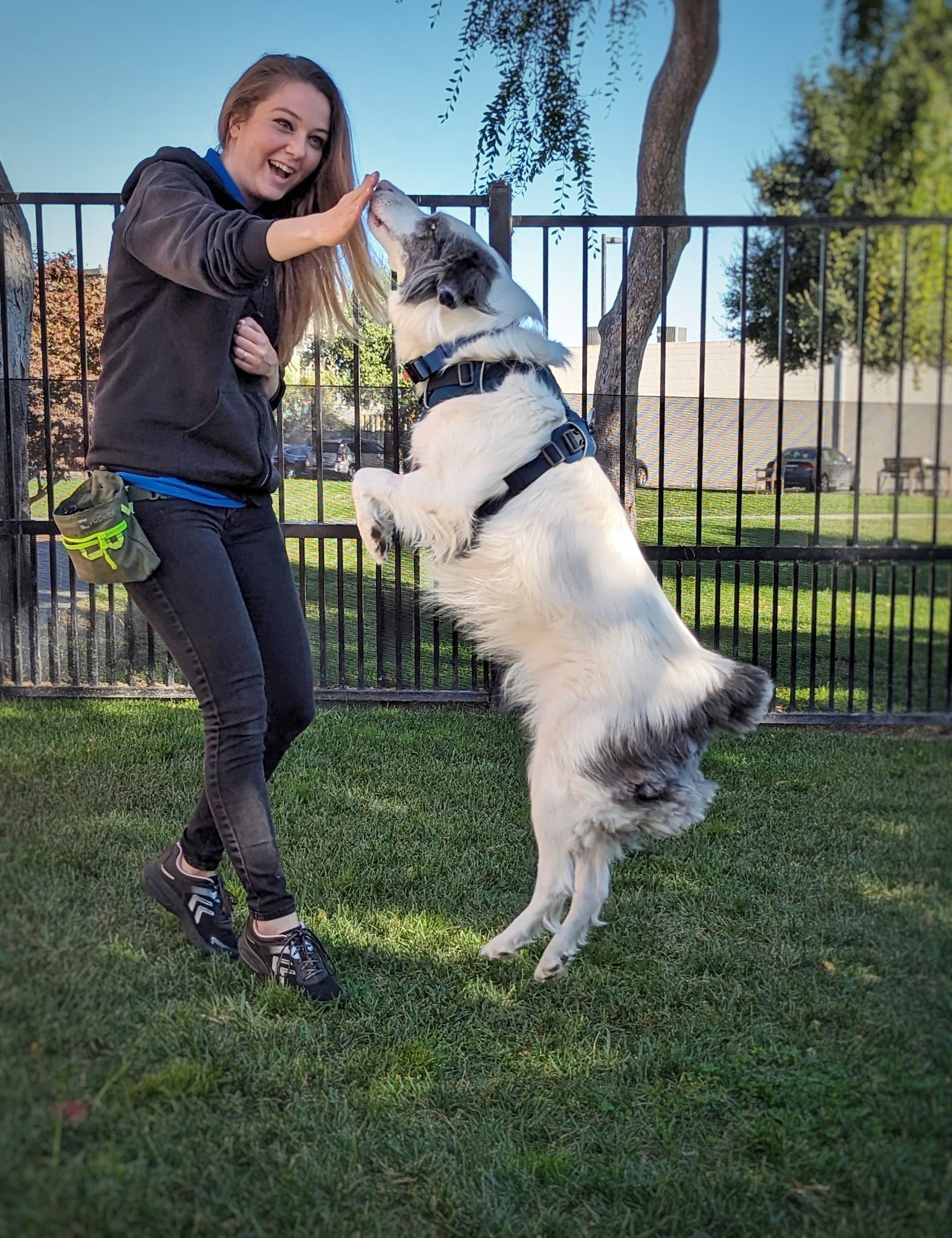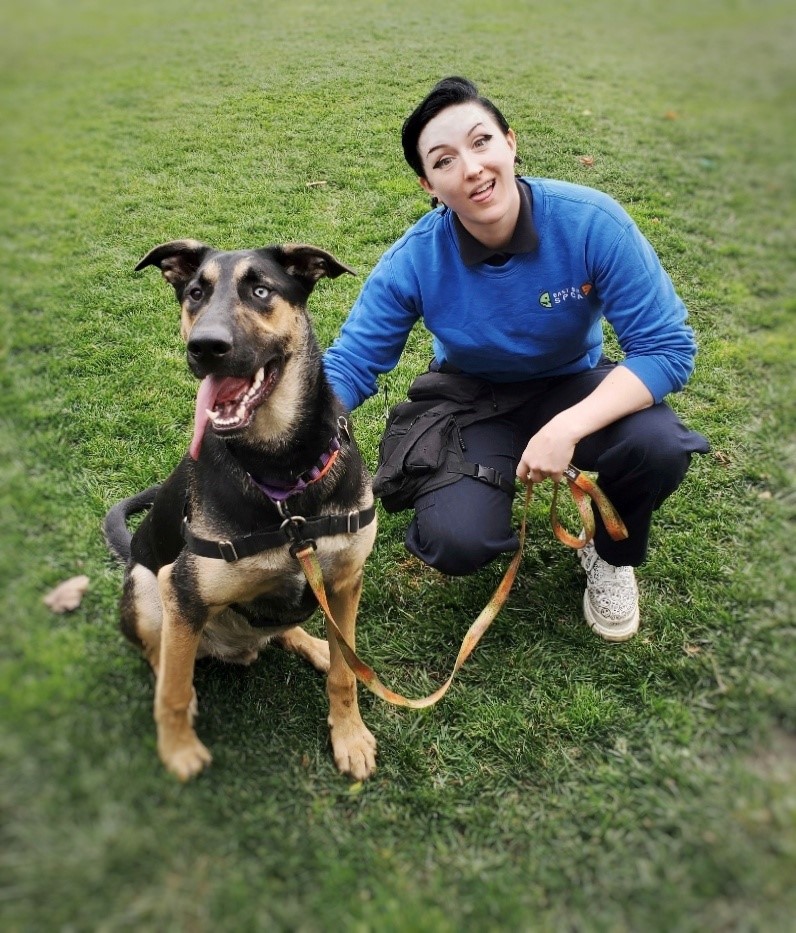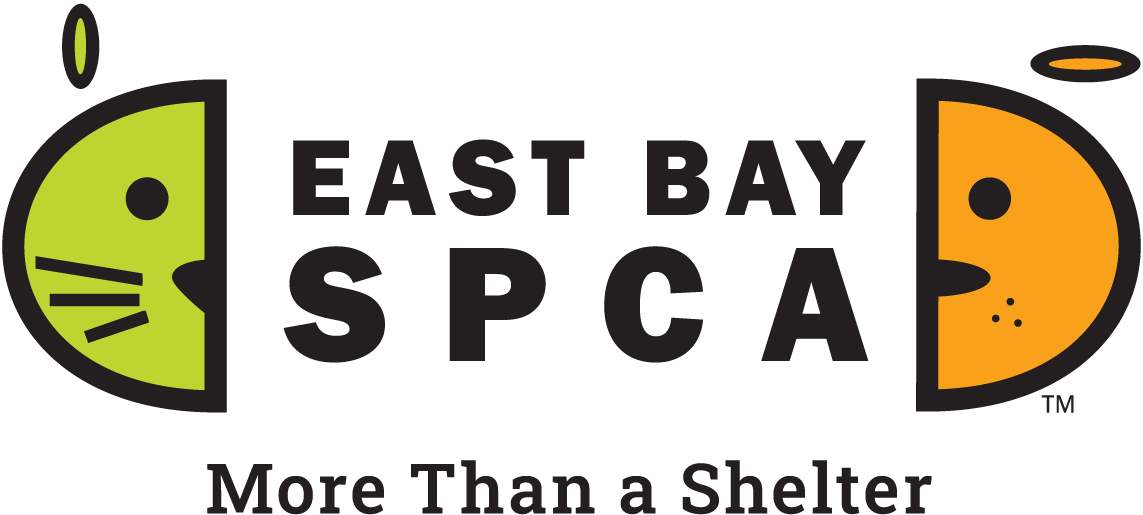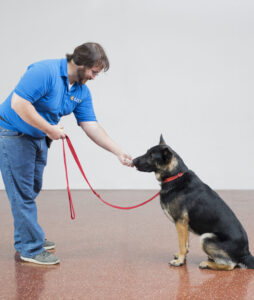With such a wide variety of dog training options available, it can be difficult to know where to turn for guidance in reaching your training goals. The dog training industry remains unregulated, leading to a variety of opinions about what methods are the “right” methods. We want to offer you an explanation of the methods we use at the East Bay SPCA and why we choose to use them.
Why Positive Reinforcement?
Recent scientific evidence in support of positive reinforcement-based training has been overwhelming. Studies show that positive reinforcement leads to improved welfare of pet dogs, has a positive influence on the human-animal bond, and is effective in achieving training goals.
We pride ourselves on remaining up-to-date and incorporating the latest information that the scientific community has to offer regarding companion animal training and animal welfare. Our staff regularly participates in continuing education to ensure that they are versed in the latest understanding and best practices pertaining to shelter husbandry, private dog training, group dog training classes, and adoption counseling. We feel it is our responsibility to provide top of the line behavioral education to our community.
Least Intrusive, Minimally Aversive
East Bay SPCA uses an ethical framework known as LIMA (Least Intrusive, Minimally Aversive) to guide our training assessments and interventions. In addition to first ruling out a medical cause for undesirable behaviors and making sure a dog’s needs are met, we aim to teach companion animals what we want them to do rather than to punish what we do not want them to do.
In addition to minimizing the potential for increasing fear or aggression that can occur in response to aversive- or punishment-based training methods, our goal is to ensure that the training scenario is a highly enriching experience for both human and dog, thereby strengthening the human-animal bond. Following the LIMA framework ensures that we are using the least intrusive and least aversive, scientifically supported training strategies to modify behavior.
What Other Types of Training Methods Are There?
You may have seen or heard references to “alpha,” “dominance,” “pack leader,” or “balanced” training methods while researching dog training options. Training based in the idea that many undesirable behaviors in pet dogs are rooted in the motivation to be “alpha” or “dominant” is not supported by scientific evidence, and knowledgeable behavior professionals reject this notion based on both ethical and scientific grounds.
Why Don’t We Use Aversive-Based Training Methods?
- The use of aversive-based methods and equipment, including e-collars, prong collars, choke chains, and other tools can result in fallout including:
- Escape/avoidance behavior
- Aggression
- Learned Helplessness (apathy)
- Generalization of fear to other elements in the environment (including the handler)
- We aim to foster the human-animal bond within the training scenario by increasing understanding between humans and their pets, establishing clear communication, and putting the welfare of both human and animal first.
- The science of behavior across species is well-established and has been studied for decades through fields such as applied behavior analysis and animal welfare science.
Our Trainers
Camille Koue, CPDT-KA
Carol Wilson, CPDT-KA, KPA-CTP, CNWI
Chris Money, CPDT-KA
Kate Witzke, CPDT-KA
Evelyn Jo, CGC-E
Micah McKechnie, CPDT-KA
Stephanie Jones, CNWI

Camille grew up loving many animal companions, including dogs both big and small, cats of many temperaments, and a few hamsters and birds over the years as well. After living in Washington, DC for 6 years for college and graduate school, Camille returned home to Oakland in 2013 and started volunteering for East Bay SPCA in animal care. She was drawn to the education and opportunities offered by the shelter’s Behavior and Training department, taking the trainings required in dog behavior to join the Behavior and Training volunteer corps in 2016. Around the same time, Camille’s family adopted a black Lab mix, Joey, who suffered from extreme fear and anxiety. The positive reinforcement training techniques that Camille learned from the shelter had a transformative and positive impact on Joey’s life. It was this experience that propelled Camille to gain her CPDT-KA certification, so that she could help others gain the knowledge of how to manage and alter behavior while also building up a dog’s confidence and strengthening the bond between K-9 and human in the process.

Carol Wilson discovered the depth of human-canine bond that can be developed through training and shared adventures when she entered the world of competitive obedience over thirty years ago. She has been training and playing with her own dogs in various companion animal activities ever since. After leaving a career in corporate marketing, Carol chose to spend time pursuing her passion for encouraging the bond between humans and their dogs. She graduated from the Canine Behavior Academy I & 2, and with distinction from the Karen Pryor Academy for Animal Training and Behavior. She is a Certified Pet Dog Trainer – Knowledge Assessed and a NACSW Certified Nose Work Instructor. As a believer in life-long learning, Carol continues to pursue additional educational opportunities in all aspects of training and learning theory. Carol has experience in competitive obedience, rally, nose work, agility and parkour. She continues to participate in a variety of canine activities with her two best friends, Border Collie-mix Maya and terrier-mix Dodge. Carol offers private behavior and nose work training through her own business, Rewarding Results, LLC.
Chris Money is a Behavior and Training Associate at the East Bay SPCA. As a young child, Chris was terrified of dogs and grew up working with much cuddlier animals like snapping turtles and fruit bats. This all changed due to a farm dog named Jed (rights for a lifetime original are already reserved) and since then Chris has loved meeting and working with dogs of all shapes and sizes. Chris found a passion for non-profit work while working with AmeriCorps and merged the two loves together by working in animal rescue. As a member of the Behavior and Training team, Chris has spent the last 10 years helping shelter animals learn the skills and behaviors they will need to succeed in a home environment. He received his CPDT-KA certification and completed Susan Friedman’s LLA for Behavior Professionals Course. Helping dogs learn to succeed and their humans learn how to help them do so is his favorite part of this work.

Kate Witzke is the Behavior & Training Manager at East Bay SPCA. A Chicago native, she has a degree in developmental psychology from Loyola University. She has always had a passion for working with companion animals, and began volunteering her local shelters right out of high school. After working with children for several years post college, she decided to turn her passion into a career and became a lead at the San Francisco SPCA. Through their extensive programs she developed a love of behavior and training, so much of which dovetailed with her degree. She pursued several training certifications, and was subsequently hired as the Behavior and Training Lead at East Bay SPCA. In addition to teaching private trainings, Kate is responsible for managing the individual behavior plans of animals in our behavior modification program. She is also the organization’s point person for training new staff and volunteers on behavior and training topics. Kate’s favorite topics to train are reactive behaviors and cooperative care behaviors, where animals can learn to participate voluntarily in their own medical care. She is also an expert in dog play and introductions, with many Shelter Playgroup Alliance workshops under her belt. When Kate isn’t working you can find her creating art in her home studio, or hiking with her extra special Australian Shepherd, Teddy.

Evelyn Jo is the Lead Dog Trainer at the East Bay SPCA, mainly instructing group and private training classes. She is certified through the American Kennel Club (A.K.C.) as an Approved Canine Good Citizen (CGC) Evaluator.
Her journey into dog training started in the classrooms of our Oakland campus alongside her Australian Shepherd, Aurora. Together they’ve passed the A.K.C. CGC Test, and travelled for multi-day adventures around and outside of California. Her specialty and favorite training method is shaping, a technique of gradually building toward a final behavior by reinforcing small incremental steps. It’s helped wonders build confidence in her fearful Terrier-mix, Genie.
One of her favorite parts about training dogs and their humans is seeing the animal-human bond deepen and grow as they learn how to communicate and work together through positive reinforcement. For Evelyn, a perfect weekend consists of documenting her dogs enjoying their adventures and playing her records while reading a book snuggled up with Genie and Aurora before bed.

Micah McKechnie is the Behavior and Training Specialist at the East Bay SPCA. She began training using positive reinforcement at age 12 and graduated from UC Santa Barbara with a degree in environmental science. After college, she continued to volunteer in animal welfare, training and handling dogs, cats, rodents, horses, sheep, goats, donkeys, alpacas, and birds of prey.
She is a CPDT-KA certified dog trainer and has completed Susan Friedman’s LLA for Behavior Professionals Course. She was a team leader in the East Bay SPCA’s partnership with the Jackson Galaxy Cat Pawsitive Pro program and is passionate about helping cat owners learn that yes, in fact you CAN train cats!
Now with almost a decade of experience working at East Bay SPCA, she designs curriculum, teaches group and private sessions, and heads up the department’s outreach to make sure that our whole community has access to up-to-date behavior and training knowledge.
In her free time, she loves riding horses, training circus arts, baking with her husband, sewing costumes, and hanging out with her two cats, Pants and Goblin.
Stephanie Jones has loved animals her entire life. As a child growing up in a small town in Maryland, she would bring home stray dogs, turtles, frogs, and orphaned or injured rabbits. She especially loved spending time with and training the family dogs.
It was with her current canine, Wilbur, that she discovered the sport of nose work. Initially, she never considered competing, however, she soon became hooked on the absolute joy that the sport brought to her and her dog. After retiring from a career in marketing, she decided to turn her passion into a second career as a K9 Nose Work® instructor became a certified instructor in July 2021. Team Wilbur earned their “NW3 Elite” title in May 2019. Wilbur at age 13, is retired from competition, but still enjoys Nose Work.








